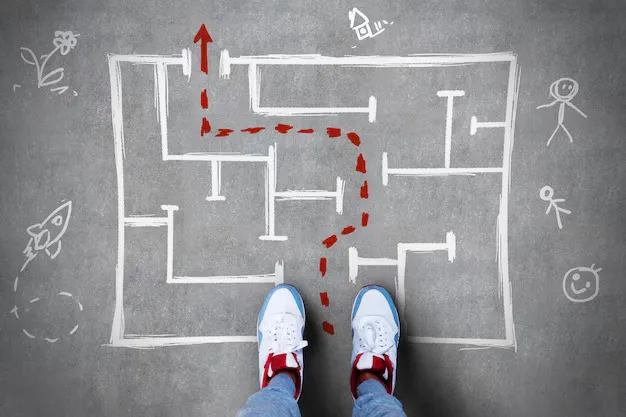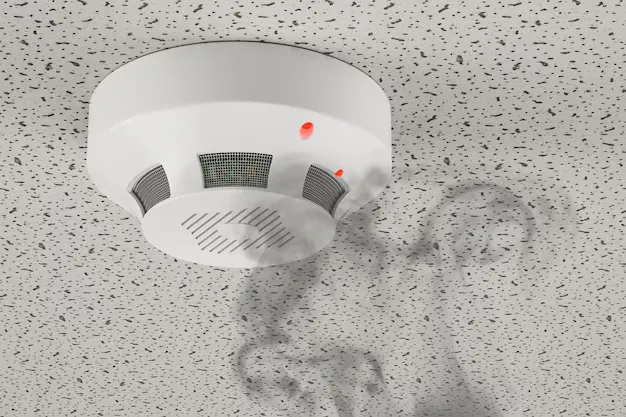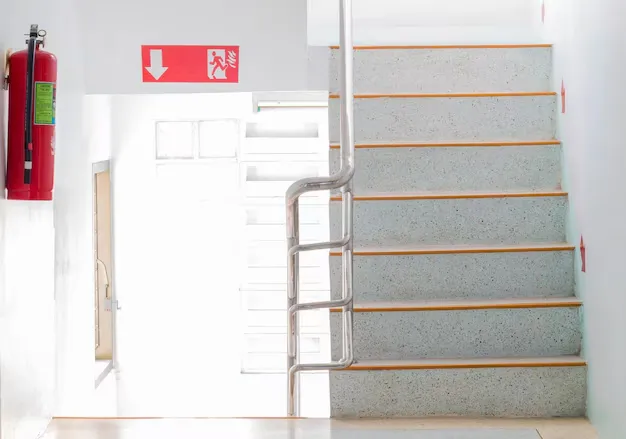Fires are no joke. They’re fast, they’re scary, and they don’t give you time to think. A tiny spark from a bad outlet or a knocked-over candle can turn your house into a nightmare in minutes. I’ve heard stories from folks who lost everything because they didn’t have a plan, and others who got out safe because they knew exactly what to do. A fire escape plan isn’t just some checklist; it’s your ticket out when smoke’s choking you and panic’s kicking in. Here’s how to build one that’ll keep you, your family, and even your pets alive.
Why Bother with a Fire Escape Plan?
Fires move crazy fast. Firefighters say a flame can double every 30 seconds. That means a little kitchen fire can swallow your whole downstairs in under two minutes. Smoke’s even worse—it’ll knock you out before you see the glow. The National Fire Protection Association (NFPA) says most fire deaths happen at night, between 11 p.m. and 7 a.m., when you’re zonked out and not ready for it. Without a plan, you’re running blind, tripping over stuff, or worse, stuck.
Kids, old folks, or anyone who can’t move fast are in extra danger. Pets too—they’re not gonna know to crawl low or find a window. A good plan covers everybody, not just you thinking you’ll “handle it” when the alarm goes off. And don’t count on having time to figure it out—smoke messes with your head, and panic makes you freeze. A fire escape plan is like knowing the emergency exits on a plane. You don’t need it until you do, and then it’s everything.
How to Build Your Plan, Step by Step
This isn’t rocket science, but you gotta put in some effort. It’s not just scribbling a map—it’s making sure everyone knows what to do when the house is filling with smoke. Here’s the breakdown.
- Draw Your House Layout
Get some paper or use a free tool like the NFPA’s escape grid online. Sketch every floor—bedrooms, bathrooms, kitchen, living room, even the garage or basement if you use them. Mark every door, window, and hallway. Put a star where your smoke alarms are (you better have them, and they better work). If you’ve got kids, let them draw with you—it makes it fun and helps them remember.
Every room needs two ways out. Usually, that’s the door and a window. If you’re upstairs, windows might need a fire ladder (we’ll get to that). Don’t bet on the stairs—fires love to start downstairs and block your main exit. Check now if windows are stuck or blocked by junk like heavy furniture. Fix that crap today, not when you’re coughing and crawling.

- Pick One Meeting Spot
Choose a spot outside where everyone goes after they get out. A mailbox, a neighbor’s porch, or a big rock in the yard—something you can find in the dark or if it’s pouring rain. Keep it far enough from the house so you’re not sucking in smoke, but close enough to reach fast. Drill it into everyone’s heads: get to the spot and stay there. No going back for your phone, wallet, or even the dog—firefighters are trained for rescues, you’re not. - Think About Who’s in the House
Got a baby? Decide who’s grabbing them. Got an elderly parent or someone who can’t walk fast? Figure out who’s helping and how—maybe you need a chair to drag them to a window if the stairs are blocked. Kids need simple orders: “Crawl to the window, pop it open, get out.” Pets? Keep a leash or carrier by an exit, but don’t let them slow you down—firefighters can grab them faster than you. If someone’s deaf, get alarms with flashing lights. Make the plan fit your crew. - Run Drills Like It’s Real
A plan you haven’t practiced is just a piece of paper. Do a drill twice a year—once in daylight, once at night. Set a timer: NFPA says you’ve got two minutes to get out. Yell “fire!” or hit a buzzer to start, and have everyone follow their routes to the meeting spot. Check that windows open easy, ladders work, and kids aren’t confused. Night drills are a must—most fires hit when you’re half-asleep and moving slow. If someone screws up, don’t get mad; tweak the plan and try again. - Teach the Basics
Make sure everyone knows these rules:- Crawl low: Smoke goes up, so stay near the floor where the air’s better.
- Check doors: Feel a door with the back of your hand. If it’s hot, don’t open it—use your other exit.
- Don’t hide: Kids sometimes duck under beds or in closets. Tell them to get out, not hide.
- Shut doors: Closing doors behind you slows the fire and smoke, giving you extra seconds.
- Stay out: Once you’re at the meeting spot, nobody goes back in. Period.
Gear You Need to Back Up Your Plan
Your plan’s only as good as the stuff you’ve got in place.

- Smoke Alarms: Put one on every floor, plus inside and outside bedrooms. Test them every month, swap batteries once a year, and replace the whole thing every 10 years. Wired alarms that also have battery backups work the best. If someone’s deaf, get alarms with bright flashing lights.
- Fire Ladders: If you’re above the first floor, get portable ladders that hook onto windows. They run $30 to $100 depending on how high you are. Brands like Kidde or First Alert are reliable. Practice setting them up so you’re not wrestling with them in a panic.
- Fire Extinguishers: Keep one in the kitchen and one near bedrooms. Get ABC-rated ones that handle all kinds of fires. Learn PASS: Pull the pin, Aim at the fire’s base, Squeeze the trigger, Sweep side to side. But if the fire’s bigger than a trash can, forget it—get out and let the pros handle it.
- CO Detectors: Fires pump out carbon monoxide, which can kill you before the flames do. Get detectors and put them near bedrooms, separate from smoke alarms.
Screw-Ups to Watch Out For
People mess this up in ways that seem dumb after the fact. Don’t be that guy:
- Forgetting Upper Floors: In a two-story house, stairs can turn into a smoke tunnel. Always have a window exit ready.
- No Second Exit: If a room only has one way out, you’re screwed if it’s blocked. Fix it now.
- Ignoring Kids or Pets: Don’t assume they’ll magically know what to do. Assign who’s getting who.
- Skipping Drills: A plan you haven’t tested is a gamble. Drills show you what’s broken—like a window a kid can’t reach.
- Thinking Sprinters Will Save You: Only about 10% of homes have sprinklers, per NFPA, and they’re not enough on their own. You still need a plan.
Tricks You Won’t Find in Every Guide
Here’s some stuff I’ve picked up from chatting with firefighters and digging into safety tips:
- Glow Tape: Put glow-in-the-dark tape along your escape paths, on baseboards, door frames, or window edges. It’s dirt cheap (like $8 a roll) and shows the way when it’s dark and smoky.
- Shoes by the Bed: Keep slip-on shoes next to everyone’s bed. Broken glass or hot floors can mess you up if you’re barefoot.
- Neighbor’s Number: If someone’s missing at the meeting spot, tell firefighters first. But having a neighbor’s number handy can help—they might spot someone or help out.
- Window Check: Old windows can stick or be too heavy for kids or older folks. Grease them up or swap them for double-hung ones that open easy.
- Guests or Renters: Got an Airbnb or a cousin crashing? Show them the plan when they show up. A 30-second rundown can save them.
Why It’s Worth the Hassle
NFPA says 60% of home fire deaths happen in houses with no working smoke alarms or no plan. That’s real people who thought “it won’t happen here.” Making a fire escape plan takes maybe an hour, plus a few minutes every six months to practice. Compare that to losing your house, your dog, or someone you care about. I’ve talked to people who’ve been through fires, and the ones with a plan always say it kept them calm when everything was going to hell.
Quick Checklist to Wrap It Up
Before you call it good, check these off:
- Every room’s got two exits mapped out.
- Everyone knows the meeting spot.
- Smoke alarms and CO detectors are working.
- Fire ladders are ready for upper floors.
- You’ve done day and night drills.
- Kids, elderly, and pets are covered.
- No stuck windows or blocked exits.
If you’re stuck, hit up NFPA’s website or call your local fire station—they’ve got free tools and sometimes even do walk-throughs. Got a weird house setup or a big family? Let me know, and I’ll toss you some custom ideas. A fire escape plan isn’t just paperwork—it’s knowing you’ve got a shot when the worst hits.




